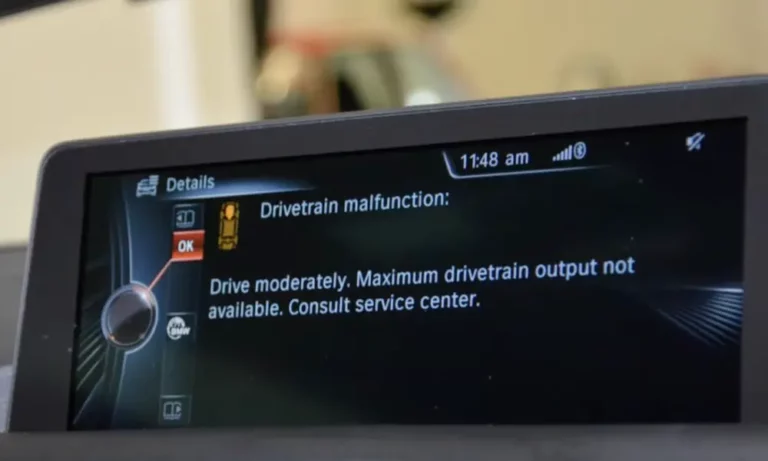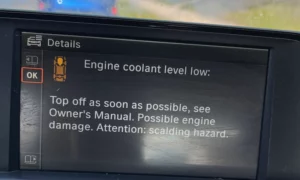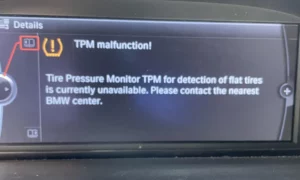Experiencing a drivetrain malfunction in your BMW X3 can be stressful. Understanding the causes and solutions of this issue will help you navigate any challenges. Common triggers range from a weak battery to engine overheating. Exploring these problems, along with effective solutions, will empower you to take control. Discover how to keep your vehicle in top shape and avoid future headaches by continuing to read.
Understanding Drivetrain Malfunction
Experiencing a drivetrain malfunction in your BMW X3 can be unsettling. It’s important to understand what this means and how it can impact your vehicle’s performance to address the issue effectively.
What Is Drivetrain Malfunction?
A drivetrain malfunction warning indicates a problem in your vehicle’s drivetrain system. This system includes parts like the engine, transmission, and wheels that work together to move your car. When something goes wrong in this system, such as a failure in the engine or transmission components, your BMW X3 might trigger a warning message.
Common causes can be mechanical failures, electrical issues, or something as simple as a sensor malfunction. If you see this warning, it’s crucial to pay attention, as it might mean reduced power, making your driving less safe. It’s a good idea to check for other signs like unusual noises or performance changes.
How It Affects Your BMW X3
When your BMW X3 shows a drivetrain malfunction warning, the car might limit its power to prevent further damage. This is designed as a protective measure. You may notice the engine performing poorly or hear odd noises, especially during acceleration or when driving uphill.
Problems with spark plugs, ignition coils, or even the battery can trigger these warnings, affecting your car’s reliability. Being proactive with regular maintenance and checking your vehicle immediately when you see this alert can prevent larger, costly repairs later. Keep an eye out for any smoke from the exhaust, which can also signal a problem in the drivetrain.
Symptoms and Warning Signs
If your BMW X3 exhibits drivetrain problems, several symptoms and warning signs can alert you to potential trouble. Understanding these can help you identify issues early and take timely action to prevent further damage.
Drivetrain Malfunction Error and Warning Lights
When a drivetrain issue arises, the vehicle often displays a Drivetrain Malfunction error on the dashboard. This warning might appear alongside other lights, such as the Check Engine Light. These alerts are critical indicators that something is amiss with your car’s drivetrain components.
It’s essential to not ignore these warnings, as they can mean anything from a minor fix to a serious issue. In some cases, a Transmission Fluid Leak might be the culprit, which can cause significant damage if not addressed promptly. Regular diagnostic checks can help pinpoint the exact cause, allowing you to address the underlying problems quickly.
Performance Issues Indicating Malfunction
Performance issues can also signal drivetrain malfunctions. You might experience Power Loss or reduced acceleration, affecting your BMW’s driving experience. Strange noises or vibrations when driving can also indicate potential problems within the drivetrain.
Difficulty shifting or a transmission stuck in one gear might signal an issue in the transmission system itself. It is critical to perform regular Troubleshooting to uncover these issues early. Watch for these symptoms, as they often provide valuable clues about the health of your drivetrain components and prevent costly repairs down the line.
Common Causes of Malfunction
When your BMW X3 shows a drivetrain malfunction warning, several components could be at fault. This section outlines potential culprits such as sensors, transmission problems, engine issues, and fuel system complications, helping you understand what might be behind this alert and how these elements are connected to the overall performance of your vehicle.
Faulty Sensors and Solenoids
Sensors and solenoids play a critical role in your BMW’s operation. Faulty sensors can send incorrect signals to the vehicle’s control module, leading to error codes. This might happen when a sensor fails due to extreme conditions like heat or vibration. Bad sensors might cause issues with differential or CV joints because the system doesn’t know how to adjust properly.
Nearby, solenoids help control the flow within the transmission and engine systems. If these become faulty, your vehicle may experience hard shifts or engine misfires. You might notice unusual noises or rough idling. Regular maintenance and prompt diagnosis can help prevent these malfunctions by ensuring that both sensors and solenoids are in good working condition.
Transmission Issues
The transmission is a critical component in any drivetrain system. In the BMW X3, transmission issues can arise from faulty solenoids or wear and tear on the driveshaft and differentials. If you experience slipping gears or delayed engagement, the transmission might be the root cause.
Transmission fluid leaks can also lead to a malfunction warning. Ensure that seals and gaskets are inspected regularly to avoid such leaks. If left unchecked, these can lead to more severe damage. Checking fluid levels and conducting regular transmission service can greatly minimize these risks and keep your vehicle running smoothly.
Engine-Related Problems
Your engine’s performance is crucial for your vehicle’s health. Problems with engine components like ignition coils or the control module might trigger a drivetrain malfunction warning. Ignition coils can fail due to excessive heat, causing misfires or stalling.
Engine-related issues can also stem from a blown turbo, which affects your engine’s power delivery. It’s important to be aware of signs like decreased performance or unusual engine noises. Regular engine maintenance, including checking ignition components and turbo health, can help prevent these issues from escalating.
Fuel System Complications
The fuel system in your BMW X3 is vital for its operation. Problems here can lead to drivetrain issues. A malfunctioning fuel pump or clogged fuel injectors can cause the engine to run inefficiently, resulting in decreased performance.
A bad sensor in the fuel system might affect how fuel is distributed, causing the control module to miscalculate fuel delivery. This can result in poor engine response or unexpected stalls. To avoid fuel-related drivetrain problems, ensure regular checks on injectors, fuel pumps, and related sensors, so that you maintain an optimal fuel delivery system.
Diagnostic Tools and Troubleshooting
When dealing with drivetrain malfunctions in your BMW X3, using the right tools and methods is crucial. This section highlights how you can use an OBD II scanner and interpret the trouble codes it generates to diagnose problems effectively.
Using an OBD II Scanner
An OBD II scanner is essential for diagnosing vehicle malfunctions. By connecting the scanner to your BMW X3, you can access a wealth of information stored in the Engine Control Module (ECM). This tool reads the onboard diagnostics and helps pinpoint the exact issues causing drivetrain problems.
The scanner retrieves trouble codes that indicate the nature of the issue. You should connect it to the port usually located under the dashboard. After turning on the ignition without starting the engine, follow the scanner’s prompts to read the codes. This step is crucial for understanding which part of the car needs attention.
Interpreting Trouble Codes
Once you have the trouble codes from the OBD II scanner, you can interpret what they mean. Each code corresponds to specific issues related to the drivetrain or other vehicle systems. For example, a P0300 code might indicate random engine misfires, which can affect drivetrain performance.
To make sense of these codes, refer to a code manual or online resources that explain each code in detail. Understanding these codes helps you decide whether the issue can be resolved at home or requires professional assistance. This process empowers you to make informed decisions about repairs and maintenance, saving time and potential costs.
Repair and Maintenance Strategies
Taking care of the drivetrain in your BMW X3 can prevent problems and save you money over time. This section looks at the most common repairs and how to keep the drivetrain running smoothly.
Common Repairs for Drivetrain Issues
If you encounter drivetrain problems, some common repairs can help. One frequent issue involves the transmission. You may need to replace or fix specific transmission components. Sometimes, the transmission control module needs a reset or replacement to restore performance.
Another common problem is with fuel delivery. Clogged fuel injectors can cause rough driving conditions. Cleaning or replacing them can often solve this issue. Additionally, some drivers experience a clogged catalytic converter. This can lead to poor acceleration and needs attention from a professional mechanic.
Besides these, make sure to inspect the engine regularly. This can help repair faults early before they turn into expensive repair costs. If the drivetrain warning light comes on, restarting the motor might temporarily fix the issue but always follow up with a thorough check.
Maintaining the Drivetrain
Regular maintenance is key to keeping the drivetrain in top condition. Start by scheduling routine oil changes. Fresh oil reduces friction and wear on moving parts. Always use the oil type recommended by BMW for the best results.
It’s also important to keep an eye on transmission fluid levels. Low fluid can cause overheating and wear. Check the owner’s manual for guidance on how often to replace it. Include checking for leaks to prevent fluid loss.
In addition, listen for unusual sounds or vibrations. If detected, have a professional inspect your vehicle. Regular tune-ups can also help, as they often include software updates for components like the transmission control module. This careful maintenance approach will save you from unexpected repair costs.













